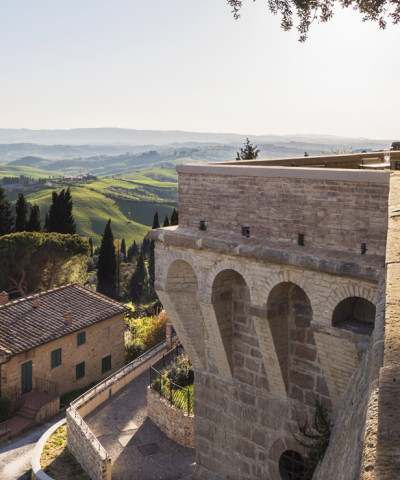The 300 years of the Chianti
A journey through history and in the lands of the Tuscan red wine par excellence
An area of 700 square kilometers- among the world’s best-known and most beautiful regions- divided between the provinces of Florence and Siena and including the whole territory of the four towns of Castellina, Gaiole, Radda and Greve and part of the territory of Castelnuovo Berardenga, Poggibonsi, Barberino Val d’Elsa and, in the Val di Pesa area, Tavarnelle and San Casciano.
In 2016, the Chianti Classico area celebrates its 300 years of history, which began on September 24, 1716, when Grand Duke Cosimo III de’ Medici issued an edict which, for the first time, set the boundaries of the region that was considered to be ideal for the production of high-quality wines. It is the cradle of Tuscany’s first and oldest winemaking families, but it is also the land where modern Italian winegrowing was born and developed.
“One of my ancestors, Antonio Antinori, who served as general depositary for Cosimo III, was appointed member of the congregation which had been entrusted with the task of drawing up the famous 1716 edict , as further evidence of his expertise in the winegrowing field”, says Piero Antinori, the first to make a clear distinction between the quality and quantity of wine and the man who can take the credit for the Chianti Classico’s renaissance in the late sixties.
The rest is more recent history, but fascinating all the same. In 1984, the Gallo Nero area was granted the DOCG status, which is the highest recognition for Italian quality wines. In 1996, it became an autonomous DOCG and, in 2010, Chianti and Chianti Classico became two separate appellations. “2014 marked the turning point in the history of the Chianti Classico- says Filippo Mazzei, a member of one of the oldest Chianti Classico families and CEO of the Marchesi Mazzei winery - with the introduction of the Gran Selezione appellation, the new top-level Chianti Classico wine category, which is also a unique example in the history of our country’s wine appellations”.
“A difficult, yet necessary, step toward producing increasingly high-quality wines which, along with the protection of our history and heritage, has allowed us to sell about 40 million bottles, 80% of which abroad, in over 70 countries”, says Sergio Zingarelli, president of the Chianti Classico Consortium.
Therefore, a vitality deeply rooted in the history of this land , “which has always had enough intrinsic resources to renew itself, in the dynamic reinterpretation of tradition and of the deep bond between its main grape variety, Sangiovese, and the terroir”, says Francesco Ricasoli of the Barone Ricasoli winery, the great-grandson of the famous Bettino Ricasoli, the so-called Iron Baron who, at his Castello di Brolio, in the 1800s, created the modern recipe of Chianti Classico wine.
“Chianti Classico is a wine but also a region - says Andrea Cecchi, who runs the family-owned winery alongside his brother Cesare - and the untiring work of wine producers over the years, along with the renovating of farmhouses, the replanting of vineyards, the promotion of the different terroirs, has made this area one of Italy’s oldest winegrowing regions worth visiting”.
Today, the Chianti Classico area is a locus amoenus, which combines wine culture and tourist hospitality, owing to the symbiosis between its deep historical roots and its proactive approach towards innovation, two sides of the same coin which have been coexisting brilliantly for centuries. Along its sun-kissed hillsides, where nature seems to have been etched in with a paintbrush, the vineyards planted with Sangiovese- the Chianti Classico’s main red grape - alternate with ancient castles, austere medieval abbeys and wineries designed by the greatest contemporary architects.
Among the events planned for the celebration of the Chianti Classico’s 300th anniversary are the Giro d’Italia’s time trial (on May 15th, the 42-km Radda-Greve race), an exhibition on the Chianti Classico’s history, titled Feeling Chianti Classico (1 Via del Convento, Radda in Chianti), in addition to the other exhibition held at the Museum of the Convento di Radda in Chianti at Casa Chianti Classico, and a conference held at Palazzo Vecchio in Florence, followed by a concert at Opera di Firenze on September 24, the day Cosimo III’s edict was issued 300 years ago.














